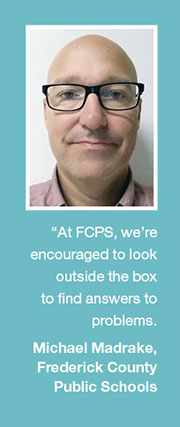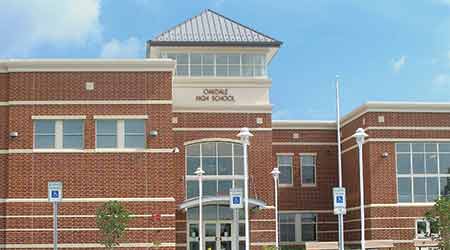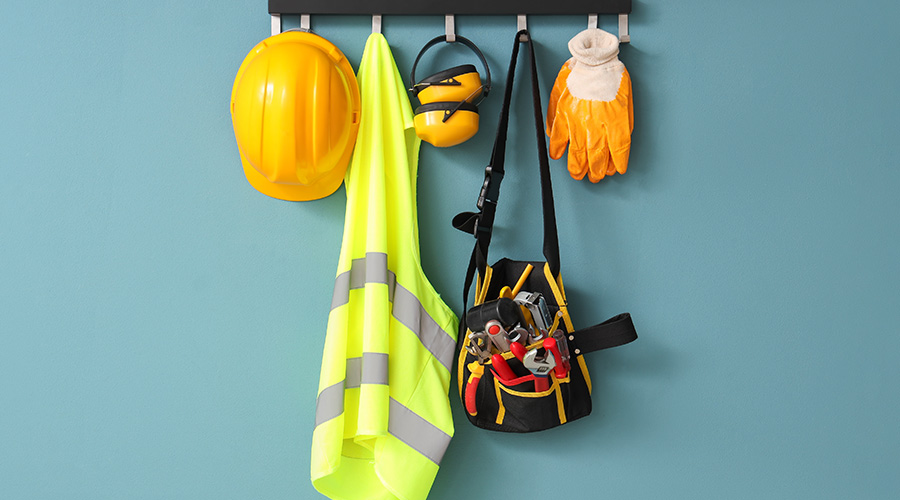Frederick County Public Schools: Controls For Portable Classrooms Save Big
Part 6 of a 6-part article profiling the 2016 FMXcellence honorees.
Frederick County Public Schools in Maryland supplements its 63 schools, serving 41,000 students, with 159 portable classrooms. Often, the facility crew would receive calls from the portable classrooms, where it was difficult to obtain consistent control and to maintain an optimal learning environment for the students and teachers. In addition, the facility staff had to physically drive to each school to change the thermostat, and check on any operating problems. And the district was spending about $2,300 annually to heat each portable classroom.
Michael Madrake, CMMS administrator, and his colleagues considered several alternatives to the thermostats. They could integrate them with the building automation systems in each school. However, this would have cost between $1,000 and $1,200 per portable classroom. What’s more, if the portable was moved, it often would need to be integrated to a new BAS, as the schools had different systems. Standard programmable thermostats were an option, but they lacked flexibility and couldn’t provide remote monitoring.
When the district began installing WiFi, Mandrake got an idea. “Here at FCPS, we’re encouraged to look outside the box to find answers to problems,” Madrake says. Madrake knew he could purchase WiFi thermostats for just a few dollars more than programmable thermostats, and at one-tenth the cost of connecting a portable to the school’s BAS. Once they were in place, the facility team could remotely control the temperature of the portable classrooms via a smart phone.
 Madrake ran a pilot with one classroom in November of 2013. “It worked flawlessly,” he says. A second pilot confirmed that the system could control multiple portable classrooms.
Madrake ran a pilot with one classroom in November of 2013. “It worked flawlessly,” he says. A second pilot confirmed that the system could control multiple portable classrooms.
Before rolling out the thermostats district-wide, Madrake worked through a few technical challenges. He found a way to program one thermostat so it could control two individual HVAC units, and developed wiring diagrams and procedures to address every possible permutation of the existing HVAC equipment in the portable classrooms.
To ensure consistency, one mechanic handled the implementations. He completed them over eight months, ending August of 2014. The total cost for the thermostats and the installation labor was $51,000.
The new thermostats cut about $70,000 from the district’s annual energy bill, including about $400 in energy savings per classroom. They also allow the facility department to centrally manage the thermostats. Now, when a snow day is called, the department can quickly set all thermostats to an “unoccupied setting.” And facilities engineers can access information about the thermostat remotely. The thermostats also reduced the number of work orders in the portable classrooms by about 30 percent, due to fewer trouble calls and operating inconsistencies.
Top photo caption and credit: District-wide WiFi made it possible for Frederick County Public Schools facility staff to install WiFi thermostats in portable classrooms for remote monitoring and control. Credit: FCPS
Related Topics:









 Madrake ran a pilot with one classroom in November of 2013. “It worked flawlessly,” he says. A second pilot confirmed that the system could control multiple portable classrooms.
Madrake ran a pilot with one classroom in November of 2013. “It worked flawlessly,” he says. A second pilot confirmed that the system could control multiple portable classrooms.







